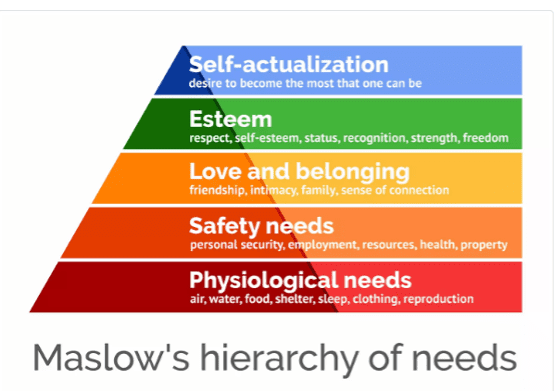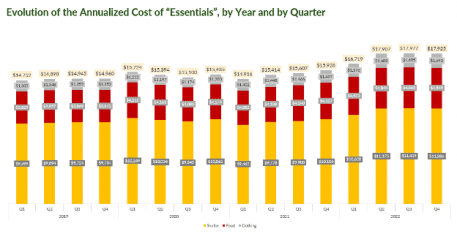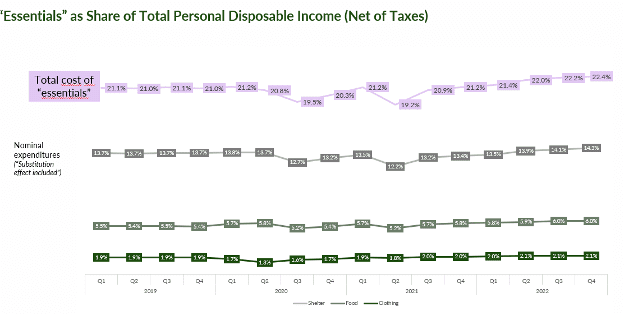Consumers Now Spend 22% of Income on Food, Clothing and Shelter

Eighty years ago, psychologist Abraham Maslow described mankind’s “hierarchy of needs.”
He’d likely gaze in alarm at the price tag, as calculated by PYMNTS, that’s attached to simply staying alive today.
Generally speaking, and through the years, the hierarchy has been depicted as a pyramid, as seen below. We, as humans, ascend the pyramid as the “needs” of each level are met. At the bottom two levels are the most basic needs — shelter, food and security.

The basics of life, you might say. The pursuit of those basics is never-ending. After all, we strive to make sure our loved ones’ bellies are full (sometimes before our own), and that there’s a place to sleep, eat (and now, in the wake of the pandemic, work).
And those needs must be satisfied, from the bottom up, in order to become “self-actualized” — the productive, happy, giving individuals we all, presumably, would like to be. But: It’s arguably hard to do good for your fellow citizens when worrying about shelter, food and keeping warm. None of this is to suggest that altruism and aspirations fall by the wayside in the daily struggle of keeping it all together, but self-actualization may seem a luxury in an increasingly tough macro-economic climate.
As PYMNTS has found in its own proprietary research, the annualized cost of shelter, food and clothing, in the aggregate — those everyday essentials — has grown 19.8% since before the pandemic, as measured in the fourth quarter of 2022 from the same period in 2019, annualized. Drill down a bit, and spending on shelter has risen 17% through the same timeframe, and food has soared 25%.

Disposable income — the net amount in the household budget after taxes — bears the brunt of inflation. Our research shows that the cost of essentials as a share of disposable income comes to 22.4%. And that’s with the “substitution effect” that’s already been seen as consumers seek to cut costs by “trading down” to less-expensive items or even pulling back altogether.
The substitution effect is widespread: In the ““Consumer Inflation Sentiment” report, more than two thirds of consumers — 69% of them, in fact — have been changing their shopping habits, in a trade-off that focuses on quantity over price and quality. By way of example, of the more than 2,100 consumers that we surveyed, 59% said that they have cut down on non-essential grocery items, and 35% said they have been opting to buy cheaper alternatives. 42% of millennials have been doing this, and 28% of the boomer generation have pursued this strategy.

Out of the whole sample, and as seen in the chart, a quarter of consumers are sacrificing quantity and quality. The impact is more pronounced amid consumers that are earning less than $100,000 annually, at more than 25% for those consumers.
The push and pull of making hard choices about what we can afford — and what we can’t — can be exhausting. And the pursuit of basic needs can get in the way of making other choices – going to school, pursuing a career that’s intellectually challenging, even engaging in charitable endeavors — so that the hierarchy of needs is a tough mountain to climb.
